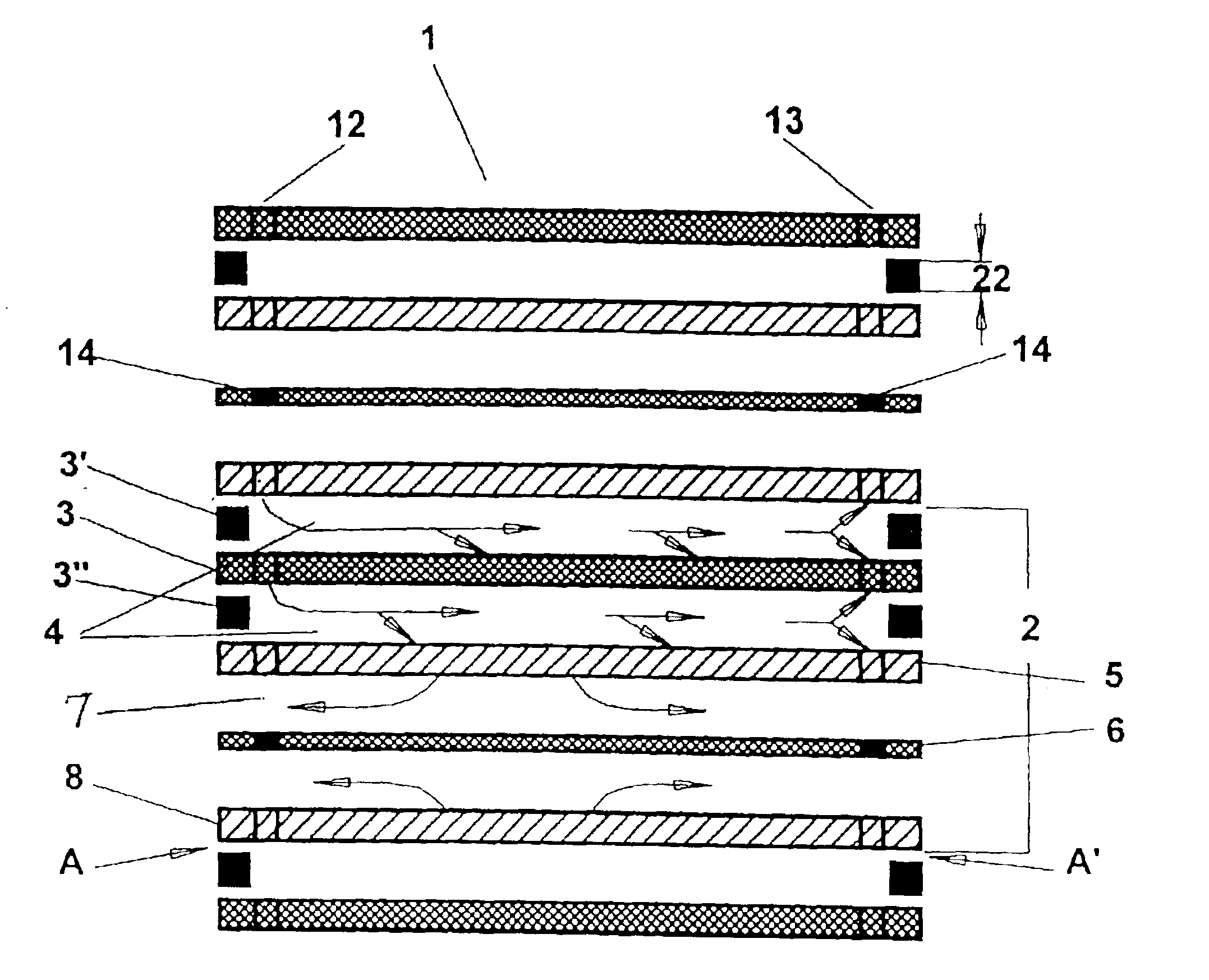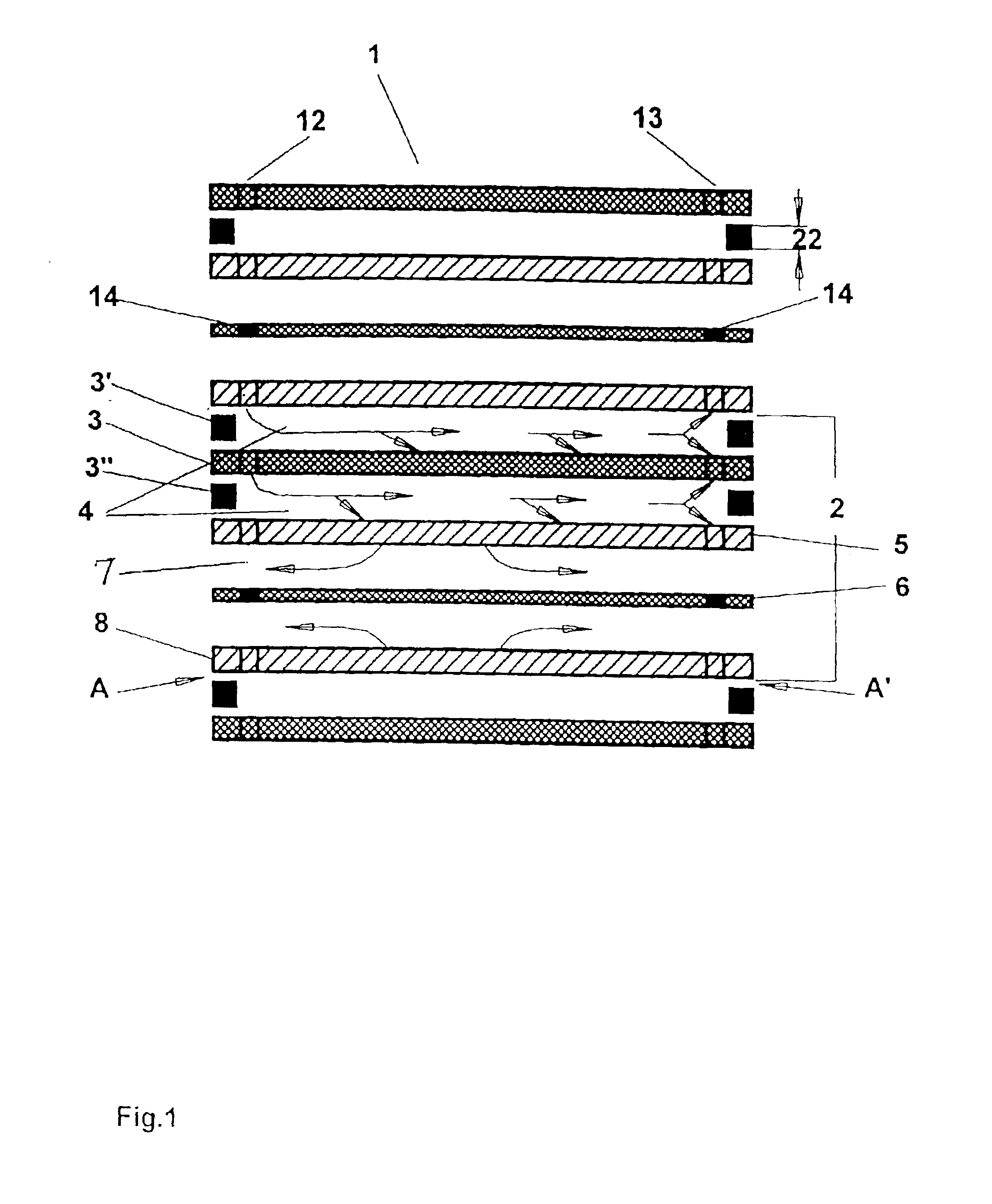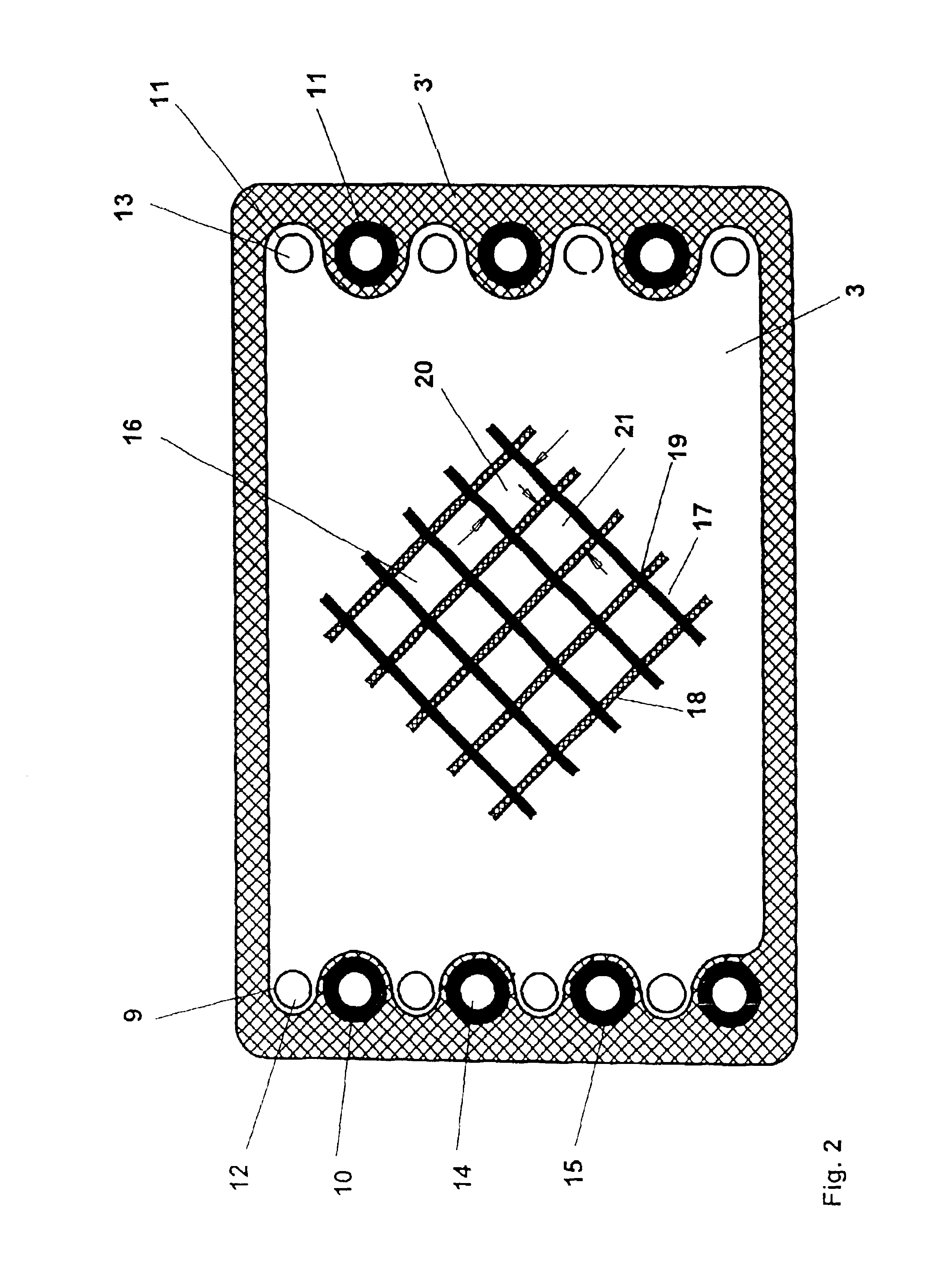Wide passage cross-flow filter cassettes
a filter cassette and cross-flow technology, applied in the direction of filtration separation, separation processes, instruments, etc., can solve the problems of limiting affecting the flow of fluid feed, and capturing particles and proteins in the filtered fluid
- Summary
- Abstract
- Description
- Claims
- Application Information
AI Technical Summary
Benefits of technology
Problems solved by technology
Method used
Image
Examples
examples
[0018]In the Examples which follow a fermentation broth in a state of decomposition having an average biomass burden of 3 kg CWW / m2 (CWW=cell wet weight) was filtered by cross-flow filtration with a conventional wide passage cassette and with the inventive filtration cassettes to obtain a fermentation product from the filtrate. Where biomass burden is concerned, a distinction must be made between the biomass burden in the retentate (measured in g / L) and the surface specific biomass burden (measured in kg / m2). Too high a biomass burden in the retentate can lead to blockage of the divided feed flow passage 4, while too high a surface specific biomass burden can cause a buildup tending to blind the membrane.
[0019]Each filtration cassette was equipped with hydrophilic microporous filtration membranes of cross-linked cellulose hydrate with an average pore size of 0.45 μm (Hydrosart® from Sartorius AG of Goettingen, Germany), 450 μm-thick permeate spacer elements 6 of a fabric having a th...
example 1
[0025]Filtration was carried out with a cross-flow filter cassette of the inventive design, the particulars of which are set forth below:[0026]450 μm-thick open mesh matrices 16 in retentate spacers 3 with about 210 μm-thick threads separated from each other by about 250 μm;[0027]125 μm-thick retentate spacer frames 3′ and 3″;[0028]14 feed flow passages 4; and[0029]13 permeate collection passages 7.
The longitudinal and transverse threads 17 and 18 of open mesh matrix 16 were oriented as in the Comparative Example. The cross-flow filtration showed a diminution of the retentate fluid during the second filtration cycle. The permeate flow maintained about 70% of its initial value, while after eight filtration cycles no blocking of the feed flow passage occurred.
example 2
[0030]Filtration was carried out with a cross-flow filter cassette of the inventive design, the particulars of which are set forth below:[0031]1030 μm-thick open mesh matrices 16 in retentate spacers 3 with threads from about 500 to about 650 μm thick separated from each other by about 1500 μm;[0032]80 μm-thick retentate spacer frames 3′ and 3″;[0033]11 feed flow passages 4; and[0034]10 permeate collection passages 7.
The threads of open mesh matrix 16 were fused together at their points of intersection. The longitudinal and transverse threads of the matrix were oriented at an angle of 45° relative to the direction of the feed flow. Independently of the biomass burden up to 3 kg CWW / m2 the retentate and permeate flows were constant even after seven cycles and no blockage occurred.
PUM
| Property | Measurement | Unit |
|---|---|---|
| thickness | aaaaa | aaaaa |
| thickness | aaaaa | aaaaa |
| angle | aaaaa | aaaaa |
Abstract
Description
Claims
Application Information
 Login to View More
Login to View More - R&D
- Intellectual Property
- Life Sciences
- Materials
- Tech Scout
- Unparalleled Data Quality
- Higher Quality Content
- 60% Fewer Hallucinations
Browse by: Latest US Patents, China's latest patents, Technical Efficacy Thesaurus, Application Domain, Technology Topic, Popular Technical Reports.
© 2025 PatSnap. All rights reserved.Legal|Privacy policy|Modern Slavery Act Transparency Statement|Sitemap|About US| Contact US: help@patsnap.com



